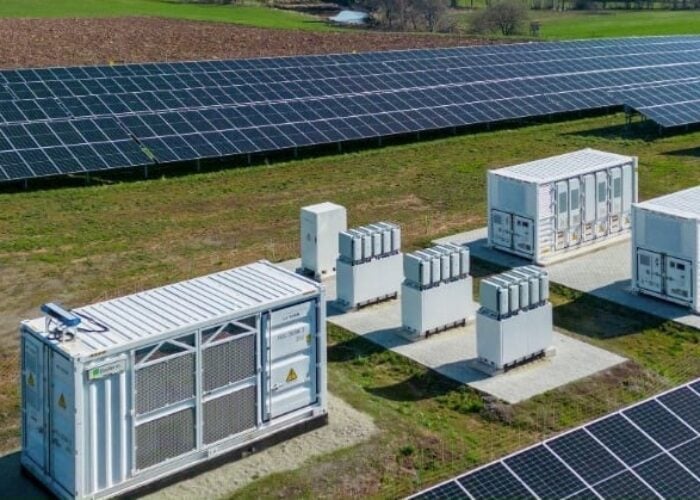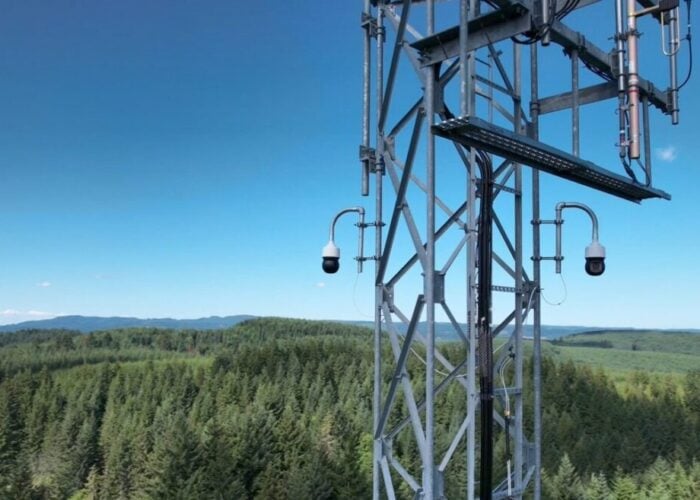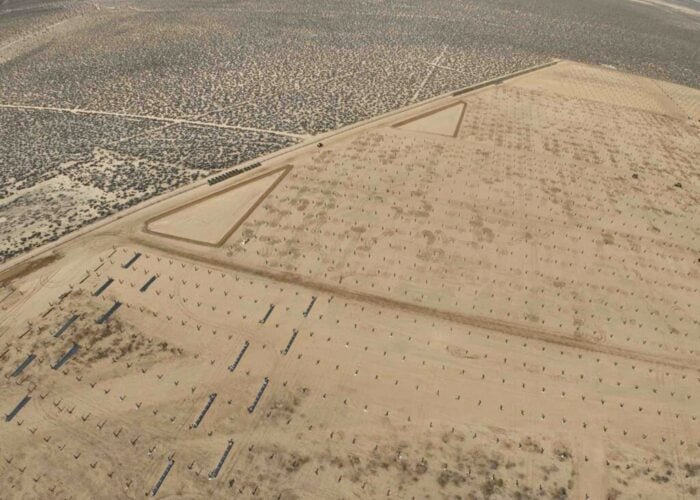
The global energy transition will only be “marginally impacted” by uncertainties in US energy policy, according to Remi Eriksen, group president and CEO of DNV, who spoke at an event held this morning in Amsterdam to launch DNV’s 2025 Energy Transition Outlook.
“The US is only 15% of global primary energy, and what happens there does ripple outwards, but those ripples diminish over time,” explained Eriksen. “For example, fossil fuels gain just a 1% advantage in the 2050 global energy mix, compared with last year’s forecasts; this means that this year’s forecast is a mid-century mix of 51% fossil and 49% non-fossil.”
Try Premium for just $1
- Full premium access for the first month at only $1
- Converts to an annual rate after 30 days unless cancelled
- Cancel anytime during the trial period
Premium Benefits
- Expert industry analysis and interviews
- Digital access to PV Tech Power journal
- Exclusive event discounts
Or get the full Premium subscription right away
Or continue reading this article for free
Indeed, the outlook is relatively positive for the solar and wind sectors, in particular, with the DNV report estimating that these technologies, both standalone and co-located with battery energy storage systems (BESS), will account for 32% of the global power mix by 2030. This will grow to more than 50% by 2040, despite a 55% growth in total electricity demand compared to today’s figures.
Energy security rises ‘to the top of concerns’
However, uncertainties over energy security loom large over many countries; moderating a panel on the relationship between the energy transition and energy security issues, DNV chief communications officer Ulrike Haugen described the situation as “moving from one vulnerability to the next one”.
“Clearly, if we think about energy security, it has risen in the last few years to the top of concerns,” explained Frans Everts, president-director of Shell Netherlands and one of the speakers on the panel. “One of our scenarios is an ‘archipelago world’, which describes a world of blocs and interests, with national interest driving scenarios. Countries and nations – and groups of nations – focus on their own self-interests, and there is a driving force of competitiveness.”
“We are witnessing a world that is fragmenting into power blocs,” agreed fellow panellist Tom Middendorp, chair of the International Military Council on Climate and Security.
“Countries are scrambling for influence over markets and control over critical resources; not just oil and gas but clean tech supply chains,” he added. “The energy transition itself has become a new arena of strategic competition … that race brings innovation, but new dependencies and fault lines.
“Strategic competition over resources is intensifying, supply chains and markets are repeatedly disrupted by shocks … and uncertainty is no longer an exception, I’m afraid it’s the new normal.”
Insulating oneself from a reliance on global supply chains has been a hallmark of many countries’ policies this year, most notably an increased demand for manufacturing capacity in the US and the imposition of tariffs on solar products imported from overseas.
The DNV report suggests that the growing importance of energy security for many national governments could disrupt priorities within the energy transition, noting that policies from “security-focused governments” are likely to result in 9% more nuclear capacity being installed by 2060, due to its perception as a reliable source of power.
“We came from a decade where the focus was on setting targets for climate and energy … and I think what we see is that in the long term, energy security and the push to climate neutrality should go hand in hand,” added the third panellist, Niels Redeker, deputy director of the climate division of the Dutch Ministry of Economy and Climate.
“Competitiveness and geopolitical developments have added strategic autonomy questions, so the issue is becoming more complex,” he continued. “We have to find a balance between sustainability, security and affordability.”
Solar investments remain affordable
The issue of affordability and investment was picked up in the second panel discussion. Karin van Selm, CEO of wholesale Europe, Africa and Asia at Rabobank, suggested that there remains considerable interest in clean energy investments, particularly as the levelised cost of electricity (LCOE) for energy sources such as solar continues to fall.
“There’s a lot of appetite and capital available for the energy transition; Rabobank has already been involved in renewable project structures for over 30 years,” said van Selm.
This is reflected in DNV’s latest figures, which show that investments in solar and wind are expected to grow from US$110 billion and US$60 billion in the last decade, respectively, to a mammoth US$900 billion and US$540 billion, respectively, by 2044.
“The issue we’re obviously seeing is the predictability of policy at the moment,” continued van Selm, suggesting that a lack of capital is not the limiting factor in delivering clean energy investments, but some of the political uncertainty that is making new power generation projects less bankable.
“It’s not the business case – I think the business case is very much there – but if we look at what has happened over the last period, the unclarity of the policy across the world – the US really changing last-minute –immediately had an impact on the business model that we thought was predictable a few years ago.”
Strikingly, in his opening remarks, Eriksen noted that while the sheer volume of capital invested into electrification is likely to increase, these investments will account for a smaller portion of Europe’s total finance.
“Over the years, DNV has consistently found that electricity expenditures are progressively becoming a smaller portion of GDP,” he said, noting that electricity spending accounted for 3.6% of global GDP in 2024, and is expected to halve to 1.8% in 2060.
“This pattern is likely to be mirrored at microlevels in households too … we expect energy costs to become an even smaller proportion of household spending.
Grids and batteries to work in tandem
The DNV report notes that many of these investments will be made in the storage space, with capital committed to batteries and pumped hydro storage having grown seven-fold in the decade to 2025 to US$50 billion a year. Looking ahead, the analyst expects solar-plus-storage projects to receive as much investment as standalone PV in 2029, and these projects will receive US$150 billion a year as early as 2030.
These investments in storage could help alleviate a major stumbling block for the energy transition, a lack of available grid capacity.
While DNV expects grid investments to double by 2050, a lack of available grid capacity continues to hamper renewable power deployment – the report notes that without the current absence of grid capacity, Europe’s operational solar capacity would be 16% higher by 2035 – and Manon van Beek, CEO of TenneT and another panellist, said that securing permitting is the main priority for her as a grid operator.
“We need permits and we need them at speed, so we need space to build,” she said. “A project in our world is 10-12 years, two years of which are construction. I’m very much in favour of a democratic process, but we need to get this done right first time.”
Ray See, executive president of the Americas at CATL, suggested that the future of the world’s grids could see an increased reliance on large-scale transmission infrastructure and small-scale storage deployments working in tandem, calling storage an “important intermediary to balance the grid.”
“There are baby steps that countries in Latin America, Africa and Asia are doing, where they start off with the distributed, behind-the-meter [system],” he added, suggesting that this kind of project could be easier to deploy than the “centralised power generation” of large-scale grid systems.
“All this, coupled with all these financing structures that allow low interest rates, [means] a lot of entrepreneurs and industrial players could be looking at behind-the-meter to be deployed first, and then gradually, as they see the benefits, the market can grow.”






